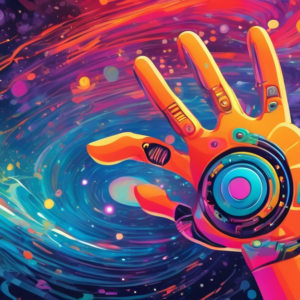Generative AI: Shaping Young Minds in Profound Ways
Generative AI, the technology capable of producing text, images, music, and even code, is no longer a futuristic concept confined to science fiction. It’s here, it’s evolving rapidly, and its impact on children is proving to be both profound and multifaceted. From revolutionizing education to reshaping entertainment and play, generative AI is leaving its mark on the very fabric of childhood.
The Educational Frontier: Personalized Learning and Beyond
Imagine a classroom where every student has access to a personalized AI tutor, available 24/7 to provide tailored lessons, answer questions, and offer encouragement. This, among many other innovations, is the promise of generative AI in education.
AI-powered platforms can analyze a student’s learning patterns, strengths, and weaknesses to create customized learning paths. Complex concepts can be broken down into digestible formats, while interactive exercises and real-time feedback keep students engaged and motivated. The traditional one-size-fits-all approach to education is being challenged, paving the way for a more personalized and effective learning experience.
But the implications extend beyond personalized lessons. Generative AI can also:
- Automate administrative tasks, freeing up teachers to focus on individual student needs.
- Create engaging and interactive learning materials, such as customized quizzes, flashcards, and even immersive simulations.
- Provide real-time translation services, breaking down language barriers and making education more accessible.
The Creative Spark: Igniting Imagination and Innovation
For children, the world is a canvas for imagination, and generative AI is providing them with an entirely new set of tools to bring their creative visions to life.
Imagine a child who can simply describe a fantastical creature they’ve dreamt up and have it instantly visualized on a screen. Or a young musician who can collaborate with an AI to compose their first symphony. These scenarios, once the realm of fantasy, are now within reach.
Generative AI tools can:
- Transform simple sketches into detailed illustrations, empowering children to become storytellers and visual artists.
- Convert text into different languages, allowing children to share their stories and ideas with a global audience.
- Generate music and sound effects, enabling children to explore the world of audio storytelling and filmmaking.
By lowering the barriers to entry and providing intuitive interfaces, generative AI is democratizing creativity, empowering children to express themselves in ways never before imagined.
Navigating the Digital Playground: New Avenues for Play and Entertainment
Generative AI is also poised to revolutionize the way children play and consume entertainment. Video games are becoming increasingly immersive and personalized, with AI-powered characters responding to player choices in dynamic and unscripted ways.
Imagine a world where:
- Children can converse with characters in their favorite stories, asking questions and influencing the narrative.
- Virtual toys can learn and adapt to a child’s play style, providing endless hours of personalized entertainment.
- Educational games seamlessly blend learning with entertainment, making acquiring new skills both fun and engaging.
This fusion of AI and entertainment opens up a world of possibilities, blurring the lines between the real and the virtual, and fostering creativity, problem-solving, and social-emotional development.
The Ethical Imperative: Fostering Responsible AI Use
While the potential benefits of generative AI for children are undeniable, it’s crucial to address the ethical considerations that come with this transformative technology.
Bias and Representation: Building Inclusive AI for All
Generative AI models are trained on massive datasets, and if these datasets reflect existing biases in society, the AI itself can perpetuate and even amplify those biases. This is particularly critical when it comes to children, who are still forming their understanding of the world.
It’s crucial to ensure that:
- AI-generated content reflects the diversity of human experiences, representing different cultures, ethnicities, abilities, and perspectives.
- Children are made aware of the potential for bias in AI and are equipped with the critical thinking skills to identify and challenge it.
Privacy and Data Security: Protecting Young Minds in the Digital Age
As children interact with AI-powered platforms, they generate a wealth of data about their learning patterns, interests, and behaviors. Protecting this data is paramount, as is ensuring that children understand their privacy rights in the digital age.
Key considerations include:
- Developing age-appropriate privacy policies that are transparent and easy for children to understand.
- Implementing robust data security measures to protect children’s information from unauthorized access.
- Empowering children with the knowledge and skills to navigate the digital world safely and responsibly.
The Human Element: Nurturing Connection and Collaboration
While generative AI holds immense potential to enhance education and entertainment, it’s essential to remember that it’s a tool, not a replacement for human connection and interaction. The role of teachers, parents, and caregivers remains as important as ever in guiding children’s learning, fostering their social-emotional development, and nurturing their love of exploration and discovery.
Generative AI should be viewed as a powerful tool to augment, not replace, these human connections.
The Future Unfolds: A Collaborative Approach to Shaping a Positive AI Future
The journey into the age of generative AI is one that we must embark on together. Educators, parents, policymakers, and technology developers all have a crucial role to play in shaping a future where AI empowers children, fosters their creativity, and prepares them for the challenges and opportunities of the 21st century.
By embracing a collaborative approach, grounded in ethical considerations and a deep understanding of children’s needs, we can harness the transformative power of generative AI to create a brighter future for all.
